 Facebook
Facebook
 X
X
 Instagram
Instagram
 TikTok
TikTok
 Youtube
Youtube
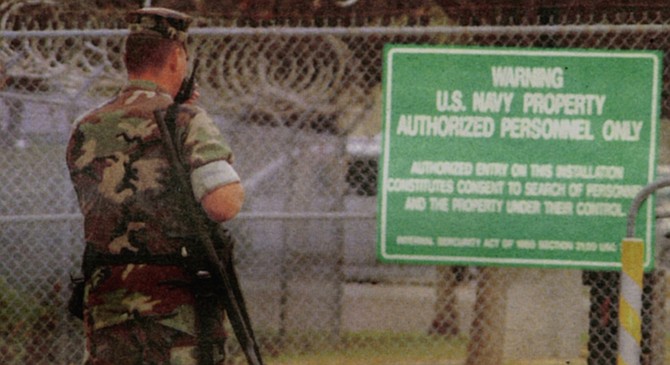
As the cloud of war descends over the world, San Diego may soon find itself at the center of the maelstrom. Three thousand miles distant from New York and Washington, D.C., 8000 miles removed from Southwest Asia and the Middle East, San Diego is second only to Norfolk, Virginia, as home to the Navy's biggest fleet concentration and intelligence establishment. They will surely play a crucial role in the world's yet-uncharted crusade against terrorism. Only the form and extent of battle that the city will face -- and whether it will escape harm in the new era of threat to the U.S. homeland proclaimed by the president -- is still unknown.
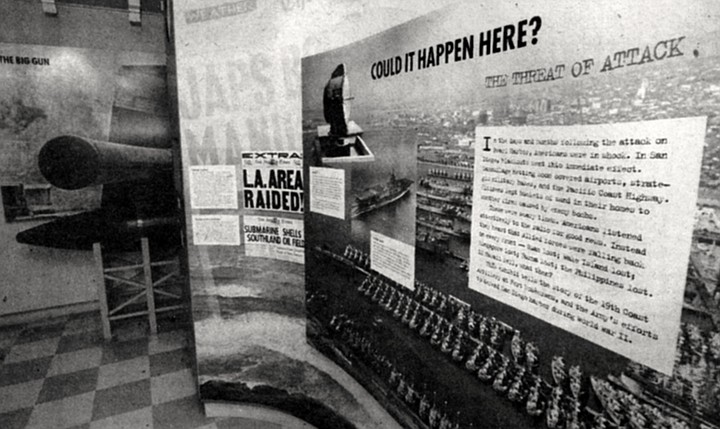
San Diego has enjoyed a peaceful life as a military town ever since the war with Mexico in 1846, when Commodore Robert Stockton established a fort at the tip of Presidio Hill near Old Town. In 1852, President Millard Fillmore set aside 1400 acres on the southern tip of Point Loma for what became the Army's Fort Rosecrans; by 1916, in the midst of World War I, the city was home to four Army, Navy, and Marine bases. Yet, as the century progressed, San Diego endured only phantom threats to its own security.
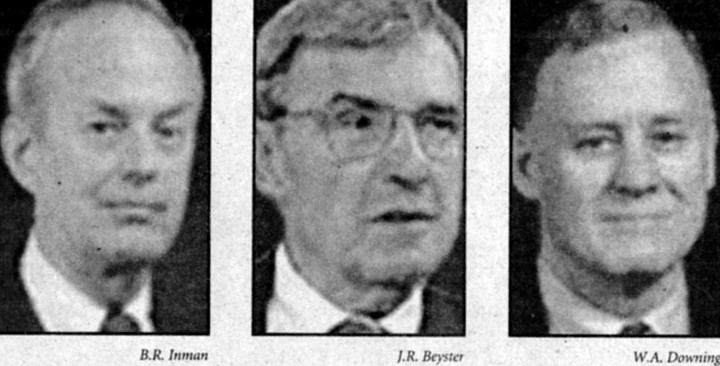
The closest call came at the end of World War II, when the desperate Japanese hatched a failed Kamikaze plan to shower the city with plague-ridden fleas. Even during the Cold War and Vietnam, with the ever-present danger of nuclear war, the city that bristled with nuclear cruisers, Triton submarines, and aerospace and electronics factories never perceived that it was at any greater risk of invasion or sabotage than, say, Topeka, Kansas.
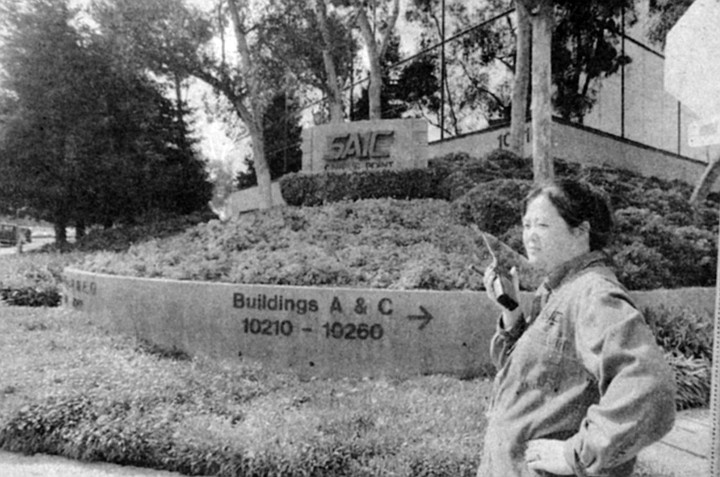
This month's attacks in New York and Washington and the coming of war promise to alter that complacency. Revelations of the un-monitored comings and goings of alleged terrorists into and out of San Diego is just one unsettling factor. The presence of so many inviting targets, with so little apparent protection, is another.
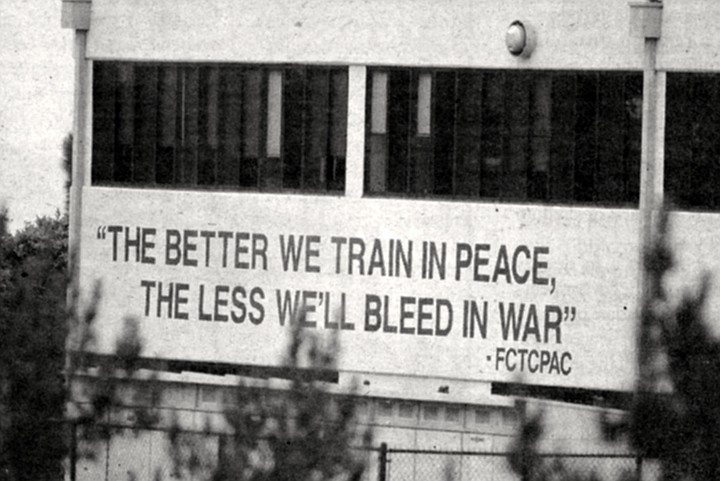
In addition to the Third Fleet itself, the city is dotted with hundreds of high-tech military installations. Many of San Diego's civilian institutions, such as Scripps Institute of Oceanography and the University of California, as well as private contractors like Science Applications International and General Atomics, are closely tied to the Pentagon through consulting arrangements and shared employees. Affluent neighborhoods such as La Jolla and Rancho Santa Fe, are home to a virtual brain trust of the nation's top defense scientists, administrators, and entrepreneurs.
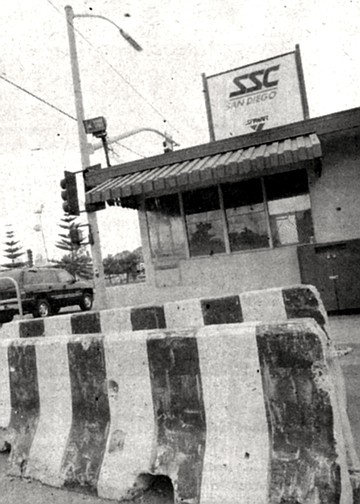
Until last week, little public heed was given to warnings from these consultants themselves that terrorists might strike in the nation's midst. Even as the Defense Department spent millions of dollars here investigating the threat of biological, nuclear, and cyber terror, few, if any, precautions were taken to protect either the researchers, their work places, or the city itself.
Some ascribe the lack of action to the carelessness of the post-Cold War era. Others point to the scattered nature of the research itself, most of which is contracted out by varying branches of the Pentagon, many seemingly unaware of what the others are up to. Though many of those associated with the city's defense think tanks repeatedly warned of a national catastrophe in the works, the message somehow never got through. And, since much of the anti-terrorism work that is conducted at local research institutions is top secret, ordinary citizens have no way of knowing about the potential hazards they face.
Many of the nation's top terrorism experts not directly employed by the government work for La Jolla's Science Applications International Corp., whose structure and activities are said to closely mirror the government's clandestine intelligence operations. Founded in 1969 at the height of the Vietnam war by nuclear physicist J. Robert Beyster, a veteran of Los Alamos National Lab and La Jolla's General Atomics, SAIC has become one of the government's largest national security contractors. Now 77, Beyster is still chairman of the board and chief executive officer of the company, which is technically employee owned but largely controlled by Beyster and a board of directors laden with retired military men and Central Intelligence Agency veterans.
Ownership of the company's stock is limited to employees, who may not sell it to outsiders. Instead they must tender their shares back to the company upon their departure from SAIC. Sources suggest that the unusual arrangement guarantees that the Central Intelligence Agency, the National Security Agency, and ultimately the Pentagon and White House control the company's destiny. Smaller defense contractors complain that they often lose out to SAIC in competitive bidding for government work because the huge firm, boasting more than $6 billion in annual revenue, has an inside track on the business.
In addition to its shadowy ties to the United States defense establishment, SAIC is also closely linked to the government of Saudi Arabia. According to the SAIC website, an entity called Saudi SAI, is an "SAIC equity partner," which "installs and maintains computer systems, telecommunications systems, and other data analysis systems for customers in Saudi Arabia. Through the history of the company, the major emphasis has been on the Royal Saudi Naval Forces C3 project; in the past four years, SSAI has emerged as a leader in the commercial sector as well."
SAIC employees are frequent donors to the campaigns of influential members of the U.S. House and Senate. Since 1988, the value of SAIC stock -- determined not by the stock market but by the company's 18-member board of directors -- has soared from under $5 to more than $30 a share. Beyster owns a 1.3 percent stake in the firm, which is worth millions.
Board members include ex-admiral Bobby Inman, a former deputy CIA director and one-time director of the National Security Agency. In 1984, he authored what became known as the Inman Report, the earliest government initiative calling into question the nation's readiness to deal with terrorist attacks. After the September 11 attacks, he told the Austin American Statesman, "This is war. We're going to have to rethink what is the trade-off for privacy in return for internal security."
Another SAIC board member is retired Army General W. A. Downing, who, according to SAIC's website, "was appointed to assess the terrorist attack on the U.S. base at Khobar Towers, Saudi Arabia, and to make recommendations to protect people and facilities worldwide from terrorist attack. As well as being acknowledged as an authority on combating terrorism, he is highly regarded as a leader and an expert by allies in the special operations community around the world."
Downing is controversial for his leadership in the 1990s of the Army's Special Operations Command and the use of its "Delta Force" in the clandestine war carried out against drug lords in the jungles of Colombia. Special operations forces are expected to play a major role in any U.S. response to the World Trade Center attack, and SAIC is said to be a key consultant to Army intelligence, providing personnel and technical assistance.
Last year Downing was a member of a federal anti-terrorism task force that called for more eavesdropping and surveillance of high-risk groups, including foreign students enrolled in nuclear physics courses at U.S. universities. No action was taken in response to the recommendations.
After the attack on the World Trade Center, Downing was quoted by the Philadelphia Inquirer as saying, about pending plans to take out Osama bin Laden, "We've been prepared to do this kind of thing for years. But they have always been rejected as too aggressive and too risky. A lot of solutions have been proposed, too, but they were all rejected, dismissed as too extreme or too dangerous. So what we end up with is something ten times as bad as Pearl Harbor."
In December 1997, SAIC formed the Center for Counter-Terrorism Technology and Analysis. Named to run the unit was David Kay, who had been head of the United Nations Special Commission, which monitored weapons of mass destruction in Iraq before the group was ejected by Saddam Hussein in 1998. In an article he wrote for Washington Quarterly in the summer of 1998, Kay warned that nuclear secrets "are now Iraqi secrets, well understood by a large stratum of Iraq's technical elite, and the production capabilities necessary to turn these secrets into weapons are widely dispersed throughout Iraq's industrial and scientific infrastructure, which will survive even the most draconian of sanctions."
In December 1998, Kay announced that SAIC had hired Robert M. Blitzer, who had been chief of the Domestic Terrorism/Counterterrorism Planning Section of the FBI's National Security Division. According to a news release issued by SAIC at the time of the appointment, "From 1993 to 1996, Blitzer served as chief of the Radical Fundamentalist Unit, Counterterrorism and Middle East Section at FBI Headquarters.
"As the leader of this unit, he was responsible for overall national coordination, oversight, and direction of all criminal and intelligence operations against the international terrorists who bombed the World Trade Center and who attempted to conduct a wave of bombings in and around New York City in early 1993."
The SAIC website lists several missions for its counter-terrorism group, including preparing for terrorist attacks. "Readiness for response to terrorist incidents using weapons of mass destruction requires a robust crisis, contingency & response planning capability.
"Terrorist use of biological agents will challenge all existing support systems. Emergency responders, law enforcement, and public health and medical systems must be integrated to create an effective response that spans pre-incident preparation to final community restoration."
The operation is said to be well funded by the Defense Department. But what had SAIC's counter-terrorism unit actually been doing in the days leading up to the September 11 attack? Other than the brief description on the website, its activities are shrouded in secrecy. Some indication of the dimensions of the project, however, can be gleaned from a series of help-wanted advertisements appearing last week on the SAIC website. Most of the work listed is for the U.S. Army's Central Command.
"Focusing primarily on the Middle East, Central Command, and Third Army's area of responsibility (AOR) is a large and complex region," according to a description on the Central Command website. "It stretches from the Central Asian States to the Horn of Africa. Within this strategically important region [are] the historical crossroads of three continents, the majority of the world's oil and natural gas reserves, and the primary maritime link between Europe and Asia. Resources, differing geography, religious influences, and historical conflict have shaped this region for centuries and continue to do so today."
As of last week, SAIC was seeking many civilian workers to perform counter-terrorism intelligence related to its Central Command contract. Some of the positions are based stateside, others at bases in England and Germany, including that of "Counter-terrorism Watch analyst."
"The Counter-terrorism Watch analyst monitors and evaluates current intelligence for terrorism-related activity in support of the United States European Command (USEUCOM) Joint Analysis Center (JAC)," according to the job description. "Watch duties are performed on shifts, in a fast-paced, all-source environment. The analyst is the JAC focal point for assessing incoming terrorism reporting and is the go-to analyst for assessments of current events.
"The Watch analyst tracks multiple events, informs affected organizations. The analyst assesses terrorism reporting, informs affected organizations, consults with other analysts, briefs JAC officials, drafts terrorism-related reports, and briefs the next Watch analyst. This is a high-visibility position which supports the critical mission to monitor terrorist activities.
"Applicant must be a U.S. Citizen and must have or be able to obtain a U.S. Top Secret/Sensitive Compartmented Information (TS/SCI) clearance. Applicants selected will be subject to a government-security investigation and must meet eligibility requirements for access to classified information. Shift work and an extended workweek may be required."
Another Central Command-related position, that of Senior Counter-Terrorism Analyst, is to be based in Tampa, Florida. "Applicant will perform all-source intelligence analysis to support counter-terrorism analysis. Duties will include: link analysis, researching databases, collating information, performing evaluations and assessments, authoring and composing reports, presenting, maintaining databases, and disseminating critical information/products.
"A High School diploma or equivalent plus sixteen (16) years experience OR twelve (12) years experience and a Masters degree in a relevant discipline. Applicants must possess a TOP SECRET/SCI clearance based on a Single Scope Background Investigation. Proven research and analysis abilities either from prior military or civilian experience."
SAIC is also deeply involved in the government's Biological Warfare program,
Clues to the scope and dimensions of the program can be gleaned from past news releases as well as from the company's help-wanted listings. In 1999, SAIC received a contract worth $17.1 million from the federal government's Defense Advanced Research Projects Agency (DARPA) to perform simulation and modeling for "biological warfare agent detection." The Defense Department reported that 63 percent of the work would be done in San Diego and the remainder in Carlsbad.
The firm's recent help-wanted advertisements offer the vague outlines of a rapidly growing, top-secret Defense Department program that has never been revealed to the public. They also seem to leave no doubt that the U.S. government is plenty worried about the potential of biological warfare, even if a coherent defense strategy has yet to emerge.
One position, listed simply as "scientist," includes tasks such as "analyzing data and researching for related activities as it pertains to biological weapons of mass destruction. Utilize state-of-the-art tools in classified and unclassified environment, prepare briefings, compile reports, etc. Work in conjunction with the COTR and other contractors on a BW program within the intelligence community."
Related positions include "Senior Biological Weapons Specialist": "Research, analyze, report, and present findings on biological agents and weapons programs -- to include both academic research and industrial production." Another position, "Senior Scientist," "requires working closely with the U.S. Army Medical Research Institute of Chemical Defense (USAMRICD) and Senior Department of Defense leadership on matters involving medical chemical defense," according to the job description.
"The candidate will support the establishment research goals, objectives, and priorities of the medical chemical defense research component of the Medical Chemical and Biological Defense Research Program. Work will be performed in U.S. Government offices staffed by DoD civilian, military and contract personnel and located on Fort Detrick, Maryland."
Yet another Biological Warfare position will "focus on the biological empirical testing phase and evaluation of novel potential therapeutics for Anthrax, Botulinum Neurotoxin, and staphylococcus Aureus Enterotoxin," all deadly germs. Candidates for the job "should have a strong background in molecular biology, protein biochemistry, and/or cell biology. Substantial experience with cloning, gene expression, and recombinant protein purification is required. Because the duty station is located in laboratory space within USAMRIID at Fort Detrick, applicants must be U.S. citizens or permanent residents. Working knowledge of immunology is a plus."
A position entitled "CB Readiness Analyst" will "provide Nuclear, Biological, Chemical, and Conventional (NBCC), major accident and natural-disaster response expertise (to include military civil support operations) to customers and SAIC. Candidate will function as key member of the analytical and traveling teams associated with NBC concepts of operation (CONOPS)." Applicants must have a "Bachelor's degree in Engineering, Operations Research, International Relations (with quantitative analysis experience), or equivalent work experience" and a "willingness to travel internationally."
SAIC also has a seven-year, $43.8 million contract to produce a malaria vaccine at its facilities in Frederick, Maryland. It also operates, under government contract, a website called Train4Life.com, which offers "Specialized chemical and biological incident training classes" to "paramedics, emergency medical technicians, doctors, nurses, firefighters, and law enforcement officials." Offerings, free or available for purchase online with proper governmental authorization, include courses on Anthrax, Orthopox viruses, Nerve Agents, Blister Agents, Cyanide and Smoke Agents, Pulmonary Agents, including Phosgene and Chloropicrin.
Another local defense institution with extensive involvement in many aspects of anti-terrorism, intelligence, and biological warfare is the Navy's Space and Naval Warfare Systems Command -- SPAWAR for short -- which has a much wider mission than its name implies. Created from the mergers of various navy research labs and joint ventures with the University of California and the California Institute of Technology dating back to World War II, the command consolidated many of the navy's research programs being conducted in facilities around the bay. The command's primary mission, according to its website, "is to be the Nation's preeminent provider of command, control, communications, computers, intelligence, surveillance, and reconnaissance solutions for warrior information dominance."
This July, well before the September 11 attacks, SPAWAR's headquarters complex across the railroad tracks from Old Town was ringed with cement barricades to resist car and truck bombs, apparently in response to the bombing of the destroyer Cole in Aden, Yemen. But the agency was worried about more than simple explosives.
That same month, SPAWAR announced that it had awarded a $6.4 million contract for research and development of "pathogen countermeasures and advanced medical diagnostics," Jane's International Defense Review reported. "The research to be conducted by ChemoCentryx will support the Defense Advanced Research Project Agency's Unconventional Pathogenic Countermeasures program."
According to the DARPA website, the program is supposed to develop so-called counter measures "versatile enough to eliminate biological threats, whether from natural sources or modified through bioengineering or other manipulation. They will also have the potential to provide protection both within the body and at the most common portals of entry (e.g., inhalation, ingestion, transcutaneous)."


As the cloud of war descends over the world, San Diego may soon find itself at the center of the maelstrom. Three thousand miles distant from New York and Washington, D.C., 8000 miles removed from Southwest Asia and the Middle East, San Diego is second only to Norfolk, Virginia, as home to the Navy's biggest fleet concentration and intelligence establishment. They will surely play a crucial role in the world's yet-uncharted crusade against terrorism. Only the form and extent of battle that the city will face -- and whether it will escape harm in the new era of threat to the U.S. homeland proclaimed by the president -- is still unknown.

San Diego has enjoyed a peaceful life as a military town ever since the war with Mexico in 1846, when Commodore Robert Stockton established a fort at the tip of Presidio Hill near Old Town. In 1852, President Millard Fillmore set aside 1400 acres on the southern tip of Point Loma for what became the Army's Fort Rosecrans; by 1916, in the midst of World War I, the city was home to four Army, Navy, and Marine bases. Yet, as the century progressed, San Diego endured only phantom threats to its own security.

The closest call came at the end of World War II, when the desperate Japanese hatched a failed Kamikaze plan to shower the city with plague-ridden fleas. Even during the Cold War and Vietnam, with the ever-present danger of nuclear war, the city that bristled with nuclear cruisers, Triton submarines, and aerospace and electronics factories never perceived that it was at any greater risk of invasion or sabotage than, say, Topeka, Kansas.

This month's attacks in New York and Washington and the coming of war promise to alter that complacency. Revelations of the un-monitored comings and goings of alleged terrorists into and out of San Diego is just one unsettling factor. The presence of so many inviting targets, with so little apparent protection, is another.

In addition to the Third Fleet itself, the city is dotted with hundreds of high-tech military installations. Many of San Diego's civilian institutions, such as Scripps Institute of Oceanography and the University of California, as well as private contractors like Science Applications International and General Atomics, are closely tied to the Pentagon through consulting arrangements and shared employees. Affluent neighborhoods such as La Jolla and Rancho Santa Fe, are home to a virtual brain trust of the nation's top defense scientists, administrators, and entrepreneurs.

Until last week, little public heed was given to warnings from these consultants themselves that terrorists might strike in the nation's midst. Even as the Defense Department spent millions of dollars here investigating the threat of biological, nuclear, and cyber terror, few, if any, precautions were taken to protect either the researchers, their work places, or the city itself.
Some ascribe the lack of action to the carelessness of the post-Cold War era. Others point to the scattered nature of the research itself, most of which is contracted out by varying branches of the Pentagon, many seemingly unaware of what the others are up to. Though many of those associated with the city's defense think tanks repeatedly warned of a national catastrophe in the works, the message somehow never got through. And, since much of the anti-terrorism work that is conducted at local research institutions is top secret, ordinary citizens have no way of knowing about the potential hazards they face.
Many of the nation's top terrorism experts not directly employed by the government work for La Jolla's Science Applications International Corp., whose structure and activities are said to closely mirror the government's clandestine intelligence operations. Founded in 1969 at the height of the Vietnam war by nuclear physicist J. Robert Beyster, a veteran of Los Alamos National Lab and La Jolla's General Atomics, SAIC has become one of the government's largest national security contractors. Now 77, Beyster is still chairman of the board and chief executive officer of the company, which is technically employee owned but largely controlled by Beyster and a board of directors laden with retired military men and Central Intelligence Agency veterans.
Ownership of the company's stock is limited to employees, who may not sell it to outsiders. Instead they must tender their shares back to the company upon their departure from SAIC. Sources suggest that the unusual arrangement guarantees that the Central Intelligence Agency, the National Security Agency, and ultimately the Pentagon and White House control the company's destiny. Smaller defense contractors complain that they often lose out to SAIC in competitive bidding for government work because the huge firm, boasting more than $6 billion in annual revenue, has an inside track on the business.
In addition to its shadowy ties to the United States defense establishment, SAIC is also closely linked to the government of Saudi Arabia. According to the SAIC website, an entity called Saudi SAI, is an "SAIC equity partner," which "installs and maintains computer systems, telecommunications systems, and other data analysis systems for customers in Saudi Arabia. Through the history of the company, the major emphasis has been on the Royal Saudi Naval Forces C3 project; in the past four years, SSAI has emerged as a leader in the commercial sector as well."
SAIC employees are frequent donors to the campaigns of influential members of the U.S. House and Senate. Since 1988, the value of SAIC stock -- determined not by the stock market but by the company's 18-member board of directors -- has soared from under $5 to more than $30 a share. Beyster owns a 1.3 percent stake in the firm, which is worth millions.
Board members include ex-admiral Bobby Inman, a former deputy CIA director and one-time director of the National Security Agency. In 1984, he authored what became known as the Inman Report, the earliest government initiative calling into question the nation's readiness to deal with terrorist attacks. After the September 11 attacks, he told the Austin American Statesman, "This is war. We're going to have to rethink what is the trade-off for privacy in return for internal security."
Another SAIC board member is retired Army General W. A. Downing, who, according to SAIC's website, "was appointed to assess the terrorist attack on the U.S. base at Khobar Towers, Saudi Arabia, and to make recommendations to protect people and facilities worldwide from terrorist attack. As well as being acknowledged as an authority on combating terrorism, he is highly regarded as a leader and an expert by allies in the special operations community around the world."
Downing is controversial for his leadership in the 1990s of the Army's Special Operations Command and the use of its "Delta Force" in the clandestine war carried out against drug lords in the jungles of Colombia. Special operations forces are expected to play a major role in any U.S. response to the World Trade Center attack, and SAIC is said to be a key consultant to Army intelligence, providing personnel and technical assistance.
Last year Downing was a member of a federal anti-terrorism task force that called for more eavesdropping and surveillance of high-risk groups, including foreign students enrolled in nuclear physics courses at U.S. universities. No action was taken in response to the recommendations.
After the attack on the World Trade Center, Downing was quoted by the Philadelphia Inquirer as saying, about pending plans to take out Osama bin Laden, "We've been prepared to do this kind of thing for years. But they have always been rejected as too aggressive and too risky. A lot of solutions have been proposed, too, but they were all rejected, dismissed as too extreme or too dangerous. So what we end up with is something ten times as bad as Pearl Harbor."
In December 1997, SAIC formed the Center for Counter-Terrorism Technology and Analysis. Named to run the unit was David Kay, who had been head of the United Nations Special Commission, which monitored weapons of mass destruction in Iraq before the group was ejected by Saddam Hussein in 1998. In an article he wrote for Washington Quarterly in the summer of 1998, Kay warned that nuclear secrets "are now Iraqi secrets, well understood by a large stratum of Iraq's technical elite, and the production capabilities necessary to turn these secrets into weapons are widely dispersed throughout Iraq's industrial and scientific infrastructure, which will survive even the most draconian of sanctions."
In December 1998, Kay announced that SAIC had hired Robert M. Blitzer, who had been chief of the Domestic Terrorism/Counterterrorism Planning Section of the FBI's National Security Division. According to a news release issued by SAIC at the time of the appointment, "From 1993 to 1996, Blitzer served as chief of the Radical Fundamentalist Unit, Counterterrorism and Middle East Section at FBI Headquarters.
"As the leader of this unit, he was responsible for overall national coordination, oversight, and direction of all criminal and intelligence operations against the international terrorists who bombed the World Trade Center and who attempted to conduct a wave of bombings in and around New York City in early 1993."
The SAIC website lists several missions for its counter-terrorism group, including preparing for terrorist attacks. "Readiness for response to terrorist incidents using weapons of mass destruction requires a robust crisis, contingency & response planning capability.
"Terrorist use of biological agents will challenge all existing support systems. Emergency responders, law enforcement, and public health and medical systems must be integrated to create an effective response that spans pre-incident preparation to final community restoration."
The operation is said to be well funded by the Defense Department. But what had SAIC's counter-terrorism unit actually been doing in the days leading up to the September 11 attack? Other than the brief description on the website, its activities are shrouded in secrecy. Some indication of the dimensions of the project, however, can be gleaned from a series of help-wanted advertisements appearing last week on the SAIC website. Most of the work listed is for the U.S. Army's Central Command.
"Focusing primarily on the Middle East, Central Command, and Third Army's area of responsibility (AOR) is a large and complex region," according to a description on the Central Command website. "It stretches from the Central Asian States to the Horn of Africa. Within this strategically important region [are] the historical crossroads of three continents, the majority of the world's oil and natural gas reserves, and the primary maritime link between Europe and Asia. Resources, differing geography, religious influences, and historical conflict have shaped this region for centuries and continue to do so today."
As of last week, SAIC was seeking many civilian workers to perform counter-terrorism intelligence related to its Central Command contract. Some of the positions are based stateside, others at bases in England and Germany, including that of "Counter-terrorism Watch analyst."
"The Counter-terrorism Watch analyst monitors and evaluates current intelligence for terrorism-related activity in support of the United States European Command (USEUCOM) Joint Analysis Center (JAC)," according to the job description. "Watch duties are performed on shifts, in a fast-paced, all-source environment. The analyst is the JAC focal point for assessing incoming terrorism reporting and is the go-to analyst for assessments of current events.
"The Watch analyst tracks multiple events, informs affected organizations. The analyst assesses terrorism reporting, informs affected organizations, consults with other analysts, briefs JAC officials, drafts terrorism-related reports, and briefs the next Watch analyst. This is a high-visibility position which supports the critical mission to monitor terrorist activities.
"Applicant must be a U.S. Citizen and must have or be able to obtain a U.S. Top Secret/Sensitive Compartmented Information (TS/SCI) clearance. Applicants selected will be subject to a government-security investigation and must meet eligibility requirements for access to classified information. Shift work and an extended workweek may be required."
Another Central Command-related position, that of Senior Counter-Terrorism Analyst, is to be based in Tampa, Florida. "Applicant will perform all-source intelligence analysis to support counter-terrorism analysis. Duties will include: link analysis, researching databases, collating information, performing evaluations and assessments, authoring and composing reports, presenting, maintaining databases, and disseminating critical information/products.
"A High School diploma or equivalent plus sixteen (16) years experience OR twelve (12) years experience and a Masters degree in a relevant discipline. Applicants must possess a TOP SECRET/SCI clearance based on a Single Scope Background Investigation. Proven research and analysis abilities either from prior military or civilian experience."
SAIC is also deeply involved in the government's Biological Warfare program,
Clues to the scope and dimensions of the program can be gleaned from past news releases as well as from the company's help-wanted listings. In 1999, SAIC received a contract worth $17.1 million from the federal government's Defense Advanced Research Projects Agency (DARPA) to perform simulation and modeling for "biological warfare agent detection." The Defense Department reported that 63 percent of the work would be done in San Diego and the remainder in Carlsbad.
The firm's recent help-wanted advertisements offer the vague outlines of a rapidly growing, top-secret Defense Department program that has never been revealed to the public. They also seem to leave no doubt that the U.S. government is plenty worried about the potential of biological warfare, even if a coherent defense strategy has yet to emerge.
One position, listed simply as "scientist," includes tasks such as "analyzing data and researching for related activities as it pertains to biological weapons of mass destruction. Utilize state-of-the-art tools in classified and unclassified environment, prepare briefings, compile reports, etc. Work in conjunction with the COTR and other contractors on a BW program within the intelligence community."
Related positions include "Senior Biological Weapons Specialist": "Research, analyze, report, and present findings on biological agents and weapons programs -- to include both academic research and industrial production." Another position, "Senior Scientist," "requires working closely with the U.S. Army Medical Research Institute of Chemical Defense (USAMRICD) and Senior Department of Defense leadership on matters involving medical chemical defense," according to the job description.
"The candidate will support the establishment research goals, objectives, and priorities of the medical chemical defense research component of the Medical Chemical and Biological Defense Research Program. Work will be performed in U.S. Government offices staffed by DoD civilian, military and contract personnel and located on Fort Detrick, Maryland."
Yet another Biological Warfare position will "focus on the biological empirical testing phase and evaluation of novel potential therapeutics for Anthrax, Botulinum Neurotoxin, and staphylococcus Aureus Enterotoxin," all deadly germs. Candidates for the job "should have a strong background in molecular biology, protein biochemistry, and/or cell biology. Substantial experience with cloning, gene expression, and recombinant protein purification is required. Because the duty station is located in laboratory space within USAMRIID at Fort Detrick, applicants must be U.S. citizens or permanent residents. Working knowledge of immunology is a plus."
A position entitled "CB Readiness Analyst" will "provide Nuclear, Biological, Chemical, and Conventional (NBCC), major accident and natural-disaster response expertise (to include military civil support operations) to customers and SAIC. Candidate will function as key member of the analytical and traveling teams associated with NBC concepts of operation (CONOPS)." Applicants must have a "Bachelor's degree in Engineering, Operations Research, International Relations (with quantitative analysis experience), or equivalent work experience" and a "willingness to travel internationally."
SAIC also has a seven-year, $43.8 million contract to produce a malaria vaccine at its facilities in Frederick, Maryland. It also operates, under government contract, a website called Train4Life.com, which offers "Specialized chemical and biological incident training classes" to "paramedics, emergency medical technicians, doctors, nurses, firefighters, and law enforcement officials." Offerings, free or available for purchase online with proper governmental authorization, include courses on Anthrax, Orthopox viruses, Nerve Agents, Blister Agents, Cyanide and Smoke Agents, Pulmonary Agents, including Phosgene and Chloropicrin.
Another local defense institution with extensive involvement in many aspects of anti-terrorism, intelligence, and biological warfare is the Navy's Space and Naval Warfare Systems Command -- SPAWAR for short -- which has a much wider mission than its name implies. Created from the mergers of various navy research labs and joint ventures with the University of California and the California Institute of Technology dating back to World War II, the command consolidated many of the navy's research programs being conducted in facilities around the bay. The command's primary mission, according to its website, "is to be the Nation's preeminent provider of command, control, communications, computers, intelligence, surveillance, and reconnaissance solutions for warrior information dominance."
This July, well before the September 11 attacks, SPAWAR's headquarters complex across the railroad tracks from Old Town was ringed with cement barricades to resist car and truck bombs, apparently in response to the bombing of the destroyer Cole in Aden, Yemen. But the agency was worried about more than simple explosives.
That same month, SPAWAR announced that it had awarded a $6.4 million contract for research and development of "pathogen countermeasures and advanced medical diagnostics," Jane's International Defense Review reported. "The research to be conducted by ChemoCentryx will support the Defense Advanced Research Project Agency's Unconventional Pathogenic Countermeasures program."
According to the DARPA website, the program is supposed to develop so-called counter measures "versatile enough to eliminate biological threats, whether from natural sources or modified through bioengineering or other manipulation. They will also have the potential to provide protection both within the body and at the most common portals of entry (e.g., inhalation, ingestion, transcutaneous)."
Comments